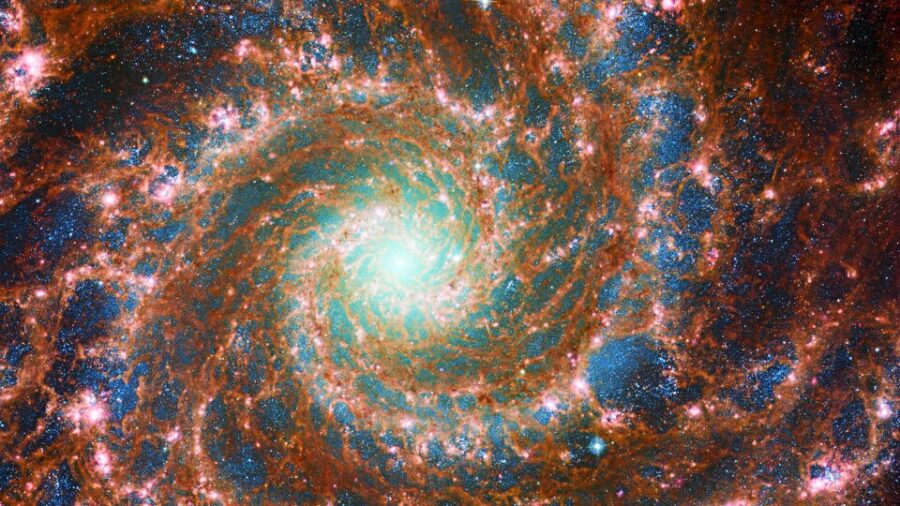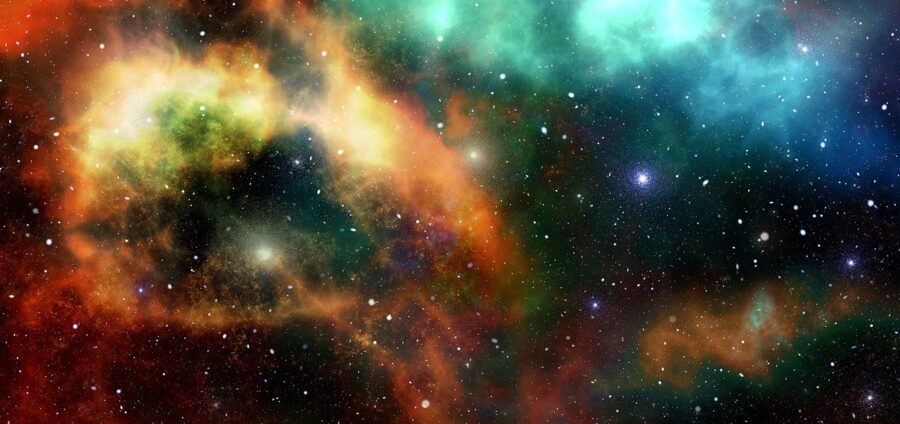Faintest Galaxy In The Universe Discovered
The faintest galaxy in our universe, JD1, dates back to the cosmic dark ages.

Newsroom UCLA confirmed that a team of UCLA astrophysicists has identified the faintest galaxy ever observed in the early universe. This galaxy, dubbed JD1, is one of the most distant galaxies we know of and was one of the galaxies that shone through the fog of hydrogen atoms leftover from the Big Bang. JD1 was discovered using NASA’s powerful James Webb Space Telescope.
The James Webb Space Telescope hasn’t been around for long, but it has already been instrumental in helping us study and understand these ancient, far-flung galaxies. Finding the faintest galaxy yet is just one step of many to help us understand the eras known as the cosmic dark ages and the Epoch of Reionization era. The highly sensitive and advanced James Webb Space Telescope will continue to help us uncover these clues about the beginning of our universe.
The cosmic dark ages is a period when the hydrogen atoms from the Big Bang would absorb the ultraviolet photons from young stars, rendering our universe dark rather than the transparent universe we know today. The first stars and galaxies would finally emerge a few hundred million years later to fill the universe with ultraviolet light and burn away the hydrogen fog. Now we’re getting a real glimpse into these early galaxies by discovering the faintest galaxy yet with JD1.

These galaxies are likely the ones that were responsible for burning through this fog in the early eons of our universe, but there will need to be more observations from the James Webb Space Telescope to help solidify these theories. Interestingly, as powerful as the James Webb Space Telescope is, natural phenomena were also needed to help us find the faintest galaxy known to humankind. According to UCLA’s article, gravitational lensing also helped us spot JD1, which might have otherwise gone unnoticed.
Gravitational lensing occurs when the combined gravitational force of nearby galaxies is so strong that it bends and amplifies the light from JDI, aka the faintest galaxy. The gravitational lensing effect essentially acts as a magnifying glass and makes the galaxy 13 times brighter and larger to our eyes. From there, the James Webb Space Telescope’s near-infrared spectrograph instrument obtains the infrared light spectrum of the galaxy and lets us know metrics like JD1’s age, its distance from us, and the number of stars, dust, and elements that the galaxy has formed throughout its lifetime.
Since the speed of light is constant from Earth, we are currently viewing the faintest galaxy as it was approximately 13.3 billion years ago. For reference, the Big Bang happened roughly 13.8 billion years ago, which means that JD1 was likely formed very close to the beginning of our universe. These major discoveries are certainly exciting, and the James Webb Space Telescope continues to prove that it will likely radically change the way we think about different aspects of the known universe.
The James Webb Space Telescope has only been around since 2021, so there is plenty more for it to discover. Who knows, maybe in a couple of months, we’ll find the new faintest galaxy. But for now, it’s very cool that we’ve discovered JD1.











